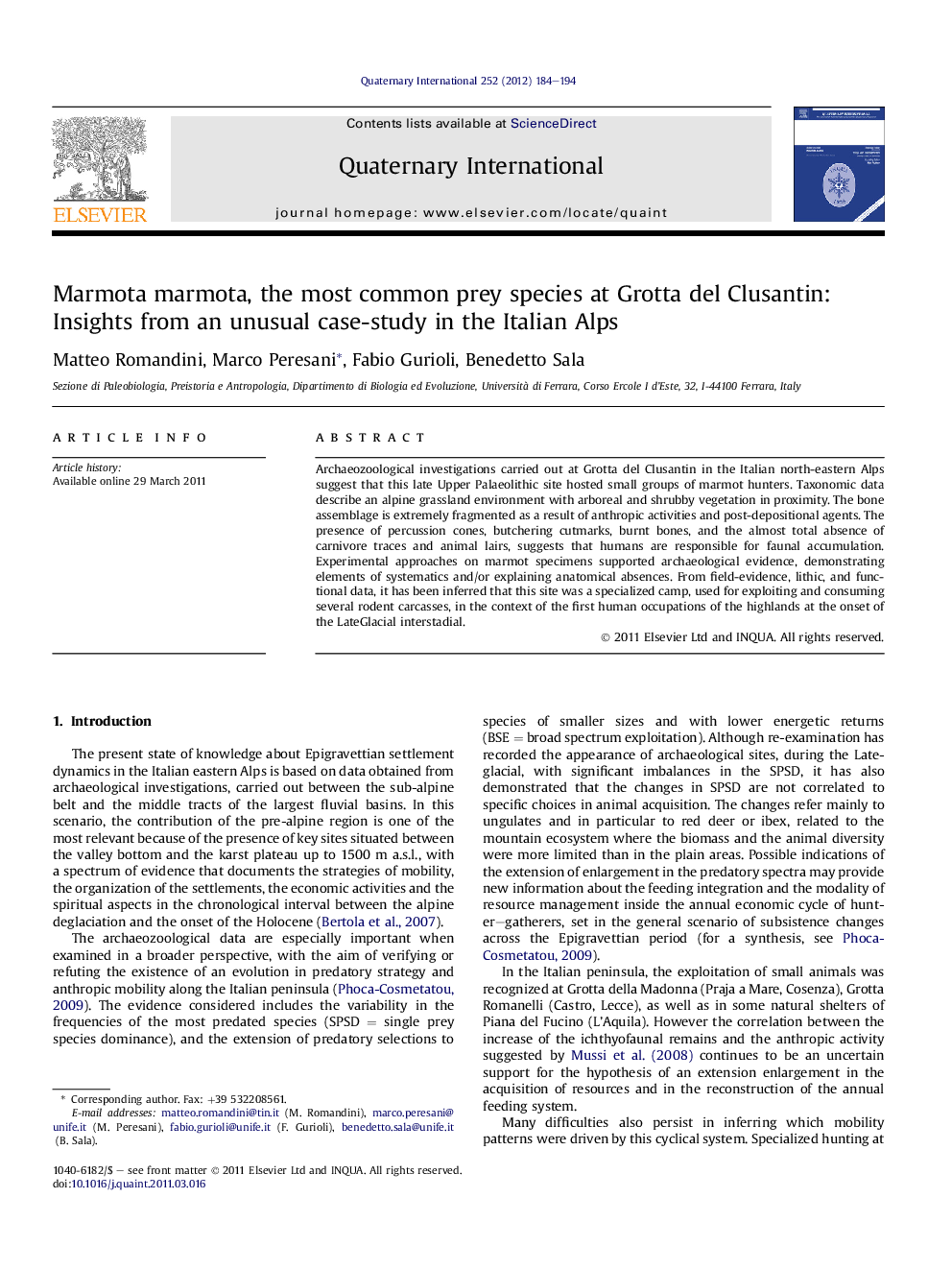| Article ID | Journal | Published Year | Pages | File Type |
|---|---|---|---|---|
| 1042907 | Quaternary International | 2012 | 11 Pages |
Archaeozoological investigations carried out at Grotta del Clusantin in the Italian north-eastern Alps suggest that this late Upper Palaeolithic site hosted small groups of marmot hunters. Taxonomic data describe an alpine grassland environment with arboreal and shrubby vegetation in proximity. The bone assemblage is extremely fragmented as a result of anthropic activities and post-depositional agents. The presence of percussion cones, butchering cutmarks, burnt bones, and the almost total absence of carnivore traces and animal lairs, suggests that humans are responsible for faunal accumulation. Experimental approaches on marmot specimens supported archaeological evidence, demonstrating elements of systematics and/or explaining anatomical absences. From field-evidence, lithic, and functional data, it has been inferred that this site was a specialized camp, used for exploiting and consuming several rodent carcasses, in the context of the first human occupations of the highlands at the onset of the LateGlacial interstadial.
